Features and subtleties of the choice of guns for hammering nails in wood
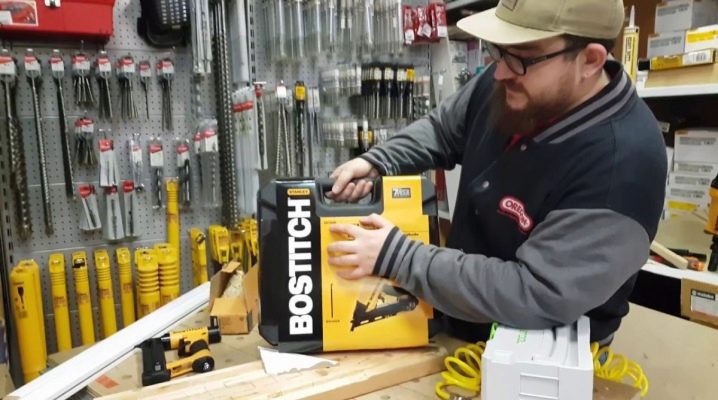
In our country, most people have only a vague concept of what constitutes a nail gun (nailer), but abroad this toolkit is available to almost any owner. Admittedly, the low income does not make it possible to buy a nail gun for home needs, but professional builders need it anyway. The article will discuss the types, applications and specifics of the operation of this construction tool.
Types of nailing devices
Wood nail guns today they are presented on the market in five modifications:
- mechanical;
- powder;
- gas;
- pneumatic;
- electrical.
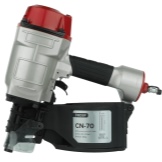
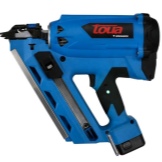
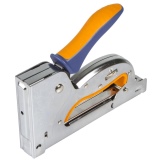
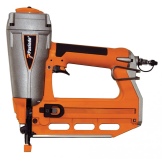
In order to understand which one you need to buy for any task, you should analyze the characteristics of each type of this device.
Mechanical
The mechanical device functions exclusively with staples due to the action of the compressed spring. Individual manufacturers create modifications that are able to work not only with staples, but also with nails - these are hybrid models.
Mechanical devices have found their main use in the furniture industry when working with wood-laminated board and other soft materials. The manual for its operation is extremely simple:
- bookmark of a special compartment with consumables (brackets);
- installation of the device at the required point;
- pulling the trigger to release the staples.
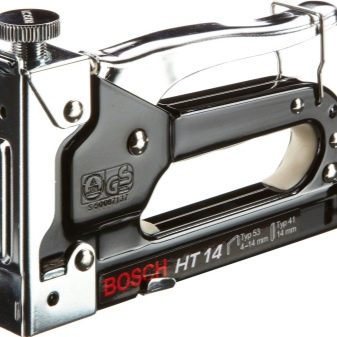
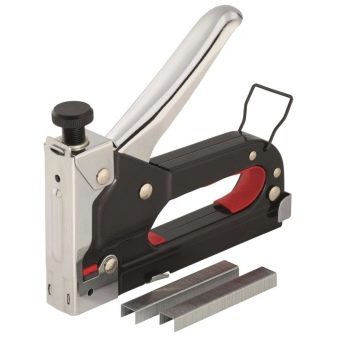
The main advantages of this pistol:
- low price;
- small dimensions and weight;
- simple operation;
- reliability at work.
Among the shortcomings is the small power, which does not allow working with strong and tough materials. If you need to do simple work, for example, hauling pieces of furniture, then this device will fully fit for this.
Electric
The activity of the electric nail gun is impulse dependent. Both rechargeable versions of the device and those operating from the mains are produced. They are usually used for fastening PVC panels to the crate or for other similar purposes.
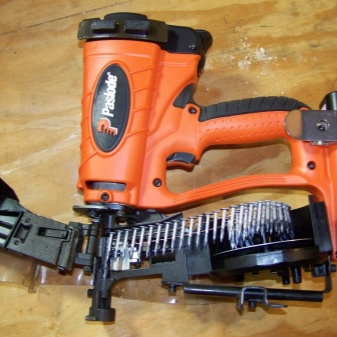

The electric nail gun is a compact, low-cost tool that does not emit fumes during operation. It features a high level of maneuverability when used with a battery.
The device does not have high power, therefore it can only be used for driving staples, pins and nails. In addition, it is undesirable to use the tool in conditions with high dampness, for example, in a bathroom.
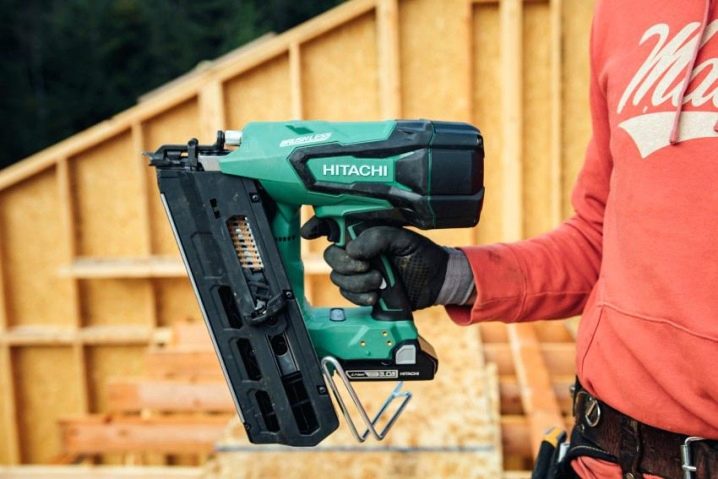
Gas
In the body of this device there is a specialized tank with a propane-butane mixture, which, when combined with oxygen and the appearance of an electric discharge from a piezoelectric element, creates microexplosions that activate the apparatus. In addition to the pistol, gas cans are purchased. Each of them includes a volume of gas sufficient for 1000 rounds.
The gas shot has the proper power, which makes it possible to even drive dowels into the concrete wall.
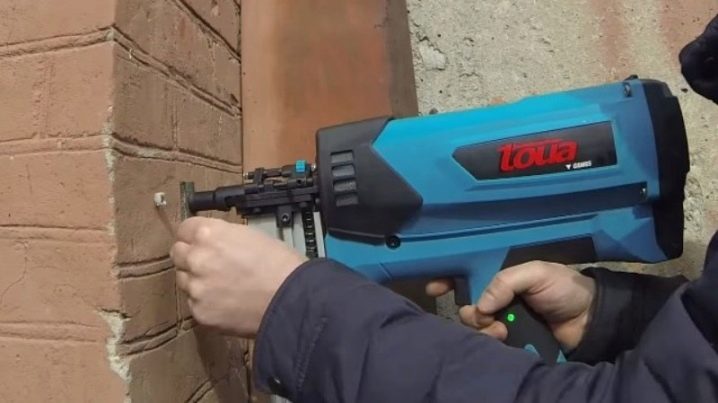
Such nail guns can work autonomously even in street conditions, have a convenient weight of 3-4 kilograms for use, and can, if necessary, be used as a perforator.
But such a unit has significant disadvantages, which sometimes become a reason for refusing to purchase a product:
- formation of exhaust emissions during operation, which excludes the use in enclosed spaces;
- high price;
- the need for constant cleaning of the internal compartment from collecting soot.
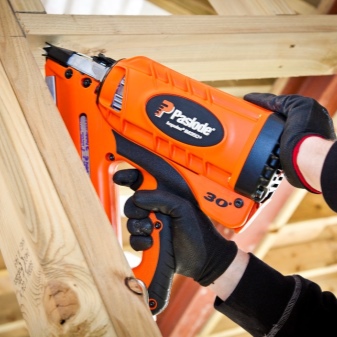
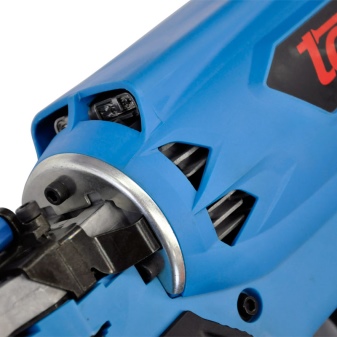
Porokhovoy
This nail gun is even more powerful than the previously described gas gun. The piston in the unit is set in motion due to the ignition of the powder in a specialized department. The power of the push is such that it makes it possible to drive nails into both iron and concrete.
At the same time, the neiler can function in automatic or semi-automatic mode. Depending on the selected rhythm, the fastener is fed at different speeds. Powder nayler is ideal for large-scale concrete work, for example, when fixing a thermal insulator.
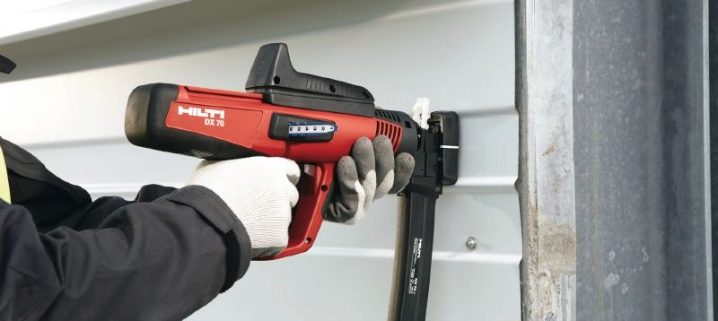
Pneumatic
The pneumatic nailer is powered by compressed air. Basically, its inflow comes from the compressor unit connected to the unit. Typically, such a device is used in the furniture industry.
The list of pros is quite extensive:
- low price;
- high speed of operation of the device;
- easy to use;
- excludes any service costs;
- can be used indoors at any temperature.
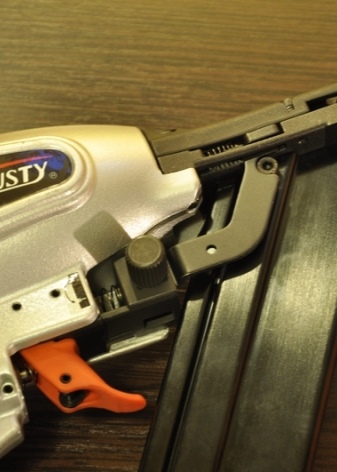

Due to the presence of a hose from the compressor unit, it is sometimes uncomfortable to use the unit. In addition, the nailer needs electricity.
How to choose a cordless nailer?
Electric guns use the energy of compressed air masses in the same way as pneumatic tools. The only difference is that the cordless nailer has a built-in blower. This mechanism of operation determines the great similarity in the design of the main working device, but meanwhile there are significant differences in maintenance and use.

Almost all cordless guns use Li-Ion power supply elements, only these batteries guarantee the required capacity and current output. Almost all modifications are equipped with one battery, which means that you need to check ahead of time if there is an opportunity to buy a spare one, moreover, combined with the existing charger connector. It would be nice if the category of the nail gun was very popular and after 3-4 years it was not discontinued.
The low productivity of the built-in supercharger cannot provide a rate of fire of more than 1.5-2 blows per second, while after a year and a half of work, due to the use of the battery, it will be possible to hammer only a nail per second or less. For many devices on a battery, there is a problem in the selection of fastening material, the use of exclusively branded products is allowed.
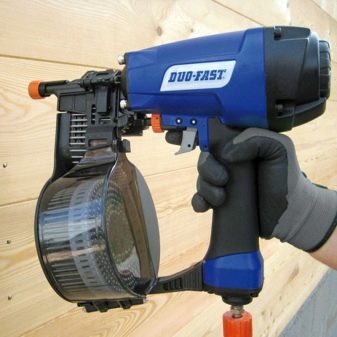
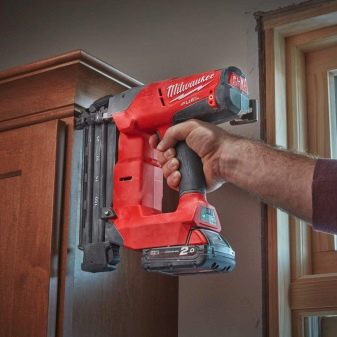
Dimensions and type of fastening material
The type of fastener directly determines the purpose of the nail gun. There are two concepts of specification: the length is set in decimal units, the thickness is set in the American system of marking the thickness of the wires. The length of the nails ranges from 25 mm to 130 mm, the caliber - from 23 (thinnest) to 11 (thickest).
It is worth noting that only 15 gauge has a round cross-section, others are rectangular. For each pistol, only a specific nail gauge can be used.
Nails are designed to function with one of three types of mounting material: drum, straight and tilted cassettes. It is advisable to select the device, starting from the availability and price of fasteners, mainly in this matter, the most interesting are tools that have a drum type and with a straight clip.
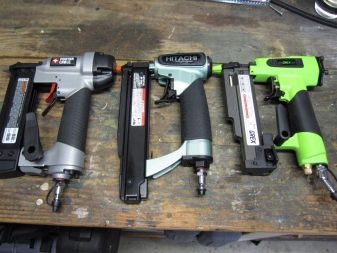
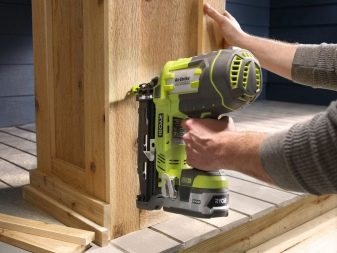
According to the size of the fasteners used, the pistols are divided according to their intended purpose into:
- finishing (section from 23 to 14, length up to 64 mm);
- sheathing (15 and 14, up to 70 mm long);
- frame and rack (fasteners in a straight and inclined drum cage 21 and 34 with a diameter of up to 11, a length of up to 130 mm);
- pallet (cross-section up to 9, length up to 130 mm);
- slate (diameter 5, length 90 - 100 mm);
- roofing (section up to 14, length from 19 to 45 mm).
Structure, maintenance and support functions
When choosing a pistol, attention should be paid to individual structural features. An important indicator is how easy it is to disassemble the feed head. Very often nails bend and need to be removed by hand. For this purpose, DeWalt, Bostitch have quick-release caps, others use a screw fixation. These same brands tend to lead the device rankings.
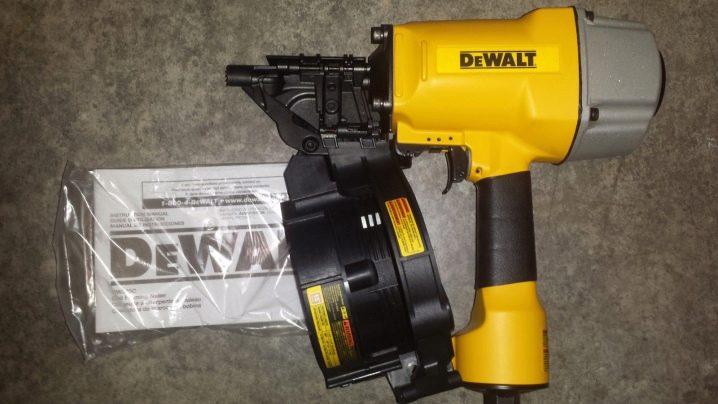
Individual guns need periodic cleaning. As a rule, this applies to nailers with a clip of straight and oblique type: dust and varnish particles holding the nails in the cassette complicate the supply of fasteners into the head. Pistols have a different insurance system against unintentional triggering. For example, 2-trigger fuses or push-in nozzle actuation can be used. Particularly comfortable is the SmartPoint design found on the latest Bostitch tools.
It is great if the gun is equipped with a striking force regulator that allows you to choose the depth of nail sinking.
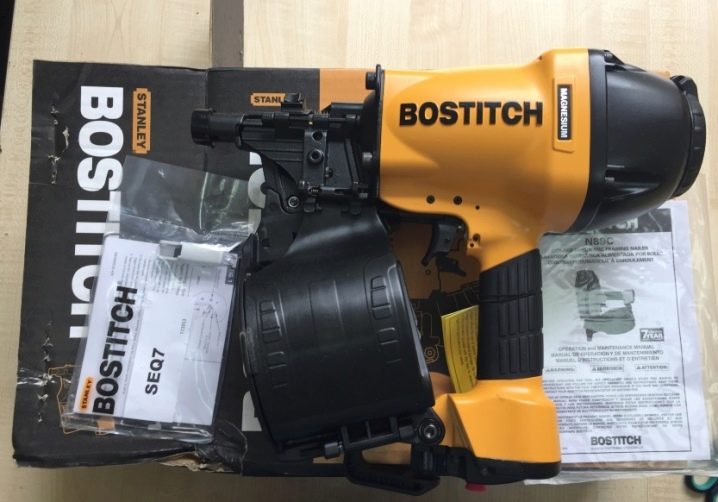
Ergonomics, weight and balance
Do not forget that the nailer is a tool with high demands on the comfort of use. The mass must be selected according to the "heavyness" of the work: for the construction of frames, naylers weighing from 5-6 kg are suitable, for delicate work - up to 1.5 kg.
Make sure the machine is perfectly balanced: if suspended on two fingers, the support must fall in the area of the trigger or slightly lower. The presence of rubber pads is optimal, the thickness of the handle should match the size of the hand.
For how to use a nail gun, see the following video.













The comment was sent successfully.